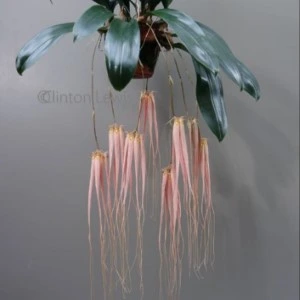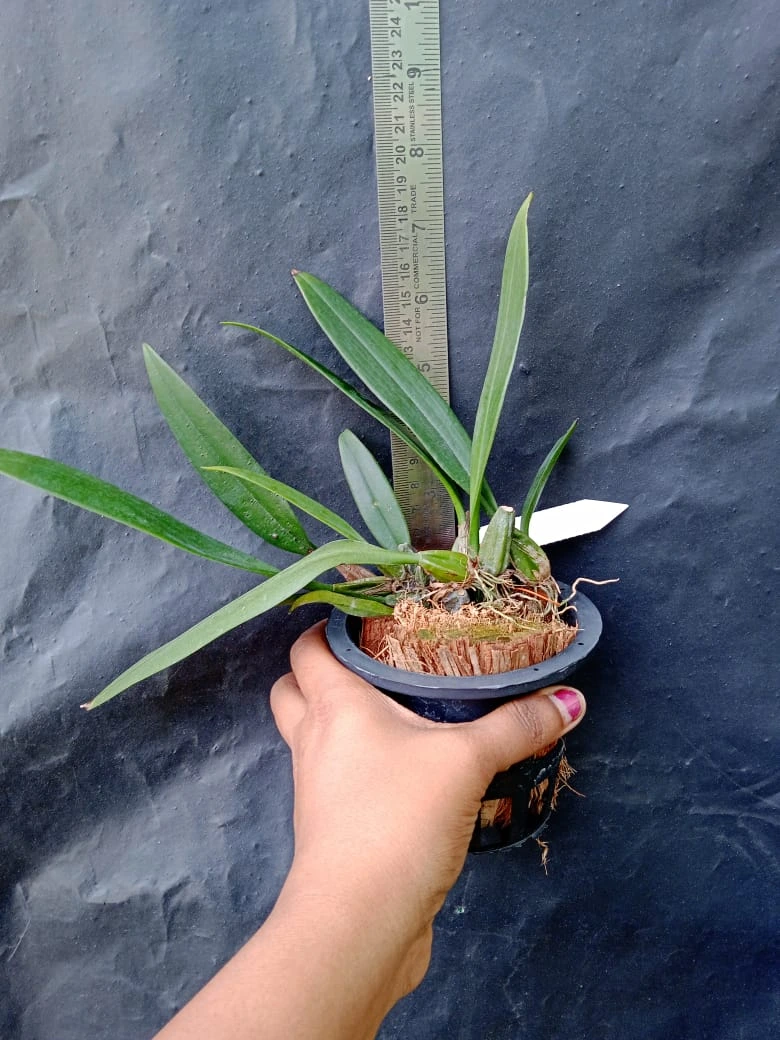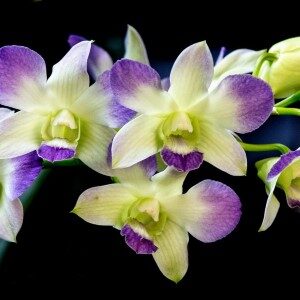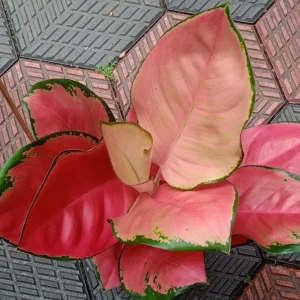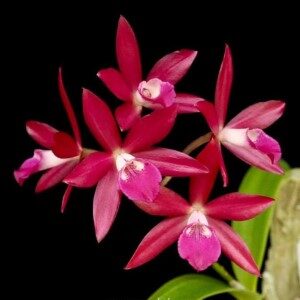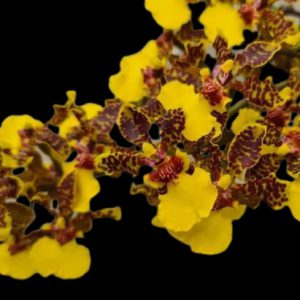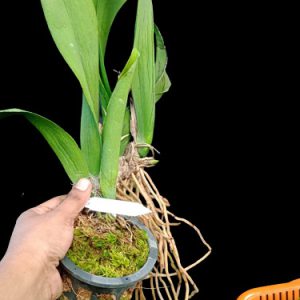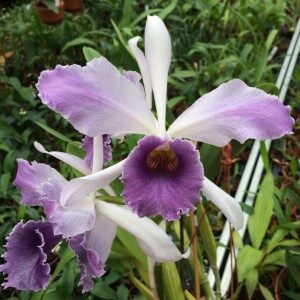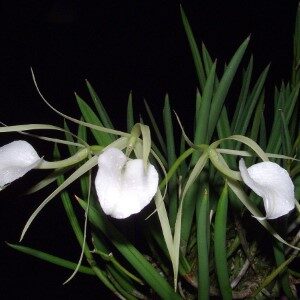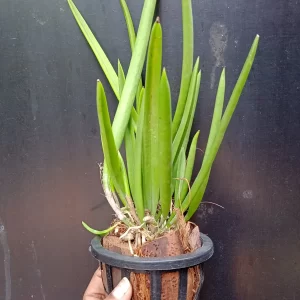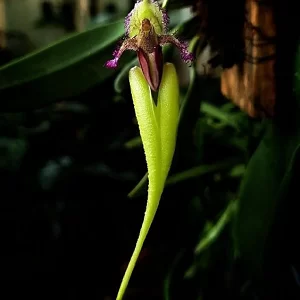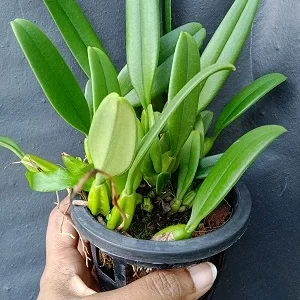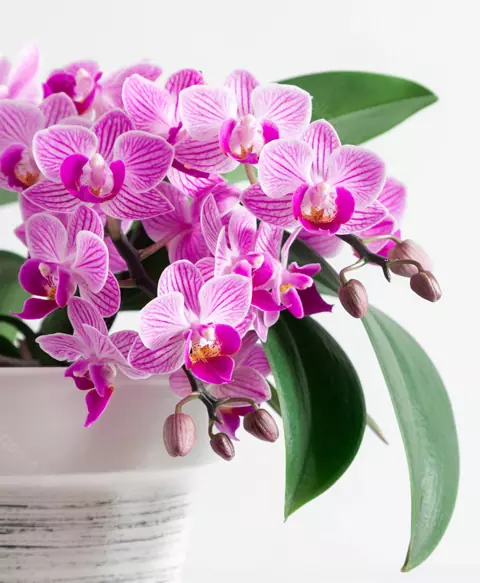Bulbophyllums are considered to be the largest group of orchids. The plants are typically small to medium sized creeping epiphytes, having a sympodial growth habit with prominent pseudo bulbs, with one or two fleshy leaves. There is a wide range of fantastic flower shapes and sizes (2mm to 400mm). The flowers come in an extensive variety of unique shapes, sizes and colours. All Bulbophyllums have a hinged lip that aids in pollination. Bulbophyllums are also known for having many species that produce foul, carrion- scented flowers.
Bulbophyllum Longissimum is most noted for its very large flowers with pendant, pink lateral petals with yellow lip. It is characterized by very shiny, long leaves on relatively small pseudobulbs. It is known as the “long-petaled bulbophyllum as the flower petals of this orchid can reach up to 30 cm long.
Bulbophyllum is a large and diverse genus within the Orchidaceae family, with over 2,000 species distributed throughout tropical regions of the world. One of the most fascinating and intriguing members of this genus is the Bulbophyllum orchid. These orchids are known for their unusual, often bizarre, and highly specialized flowers.
Bulbophyllum orchids are epiphytic, which means they grow on other plants without harming them. They are found primarily in rainforests and other moist, shaded habitats. The flowers of Bulbophyllum orchids are typically small and highly complex, with intricate patterns and structures that are adapted for pollination by specific insects, often flies or gnats. Some species of Bulbophyllum orchids emit a strong odor, often resembling rotting meat or other organic matter, to attract their pollinators.
Bulbophyllum orchids are popular among orchid collectors and enthusiasts due to their unique floral characteristics, and many species are used in traditional medicine for their medicinal properties. However, like many other orchids, Bulbophyllum orchids are threatened by habitat loss and over-collection, and some species are now considered endangered.



